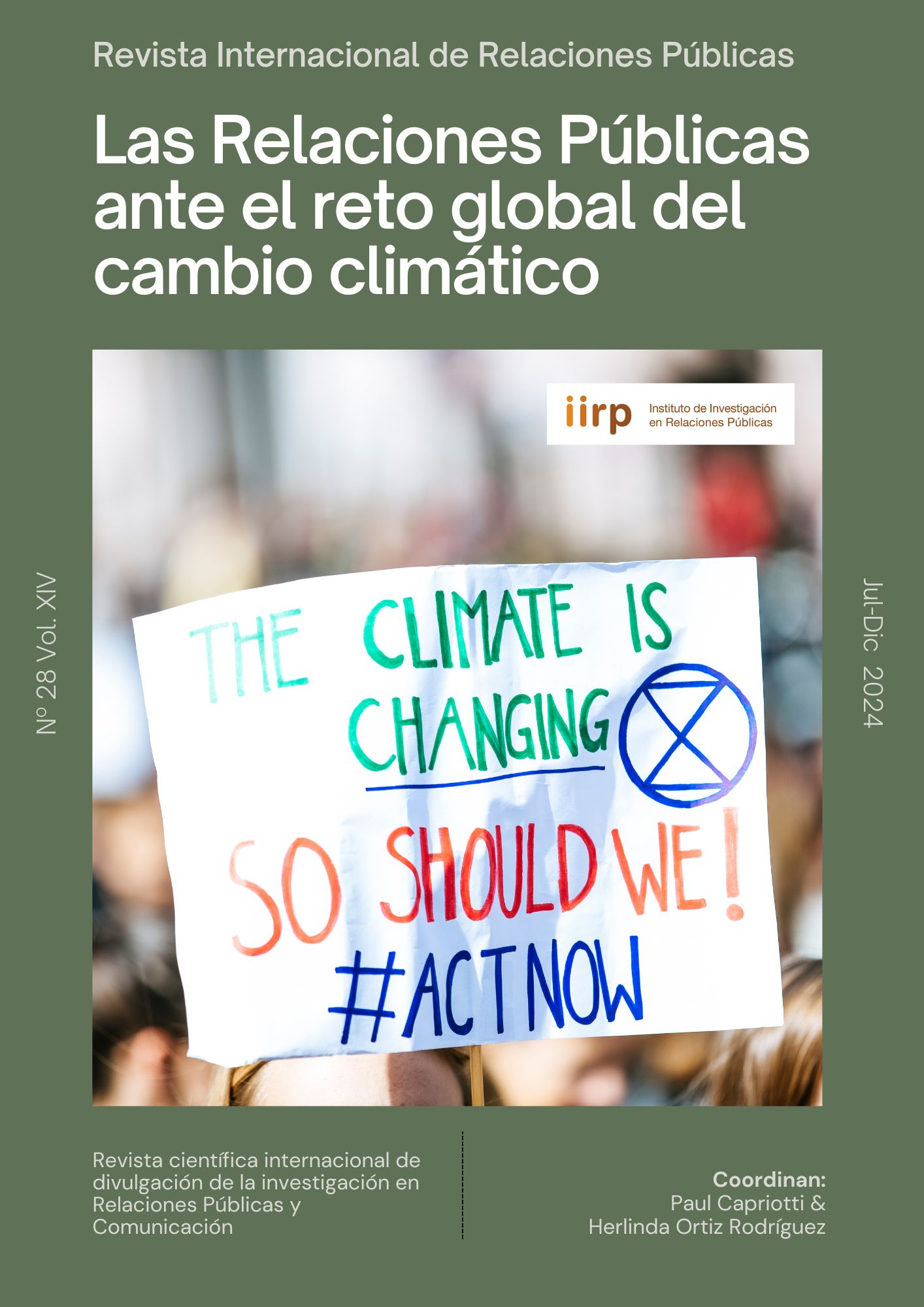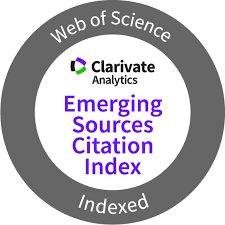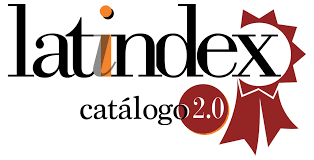Social responsibility of designer fashion brands in Spain
Analysis of websites based on sustainability and transparency
DOI:
https://doi.org/10.5783/revrrpp.v14i28.871Keywords:
Sustainability, Website, Authorial fashion, Fashion week, Exploratory researchAbstract
The fashion industry is the second most polluting sector globally, drawing significant attention from environmentalists, politicians, investors, and consumers. The industry accounts for nearly 8% of global carbon emissions and 20% of worldwide wastewater, positioning it as a key target for environmental scrutiny. As sustainable development advances across various industries and consumer awareness increases, the focus on sustainability in decision-making has become imperative. Incorporating corporate social responsibility (CSR) and sustainability into the communication strategies of fashion brands is essential for addressing reputational risks and demonstrating genuine commitment, especially considering concepts such as triple bottom line. While fast, low-cost production dominates the fashion business, new alternatives that prioritize human and environmental resources are gaining prominence. Designer fashion stands as a compelling example, with its emphasis on handmade, local production, and a commitment to quality and durability, offering an effective association with sustainability. However, the sustainability communication strategies of designer fashion brands remain underexplored. Given the trend of greenhushing, where brands conceal sustainability efforts to avoid reputational risks, websites offer an effective tool for engaging stakeholders, promoting transparency, and building legitimacy. This study aims to: (1) analyze the sustainability communication strategies of designer fashion brands in Spain through their corporate websites and (2) assess Spanish designers’ perceptions of corporate social responsibility in their business processes. A content analysis of 41 designer fashion brand websites that participated in Madrid Fashion Week (September 2022 and February 2023) revealed that 68% of brands communicate sustainability, although only 3.57% do so prominently on their homepage. Most brands (90%) use one to two pages to convey this information, primarily in textual form (only 25% include multimedia content). Brands addressing sustainability were further investigated through five semi-structured interviews, focusing on creative processes, production methods, communication tools, and the importance of sustainability-related concepts. While brands reported challenges, such as the scarcity of sustainable fabric suppliers and the higher cost of raw materials impacting final product prices, they remain committed to sustainability. However, they emphasized that true change lies with consumers: reducing consumption and investing in higher-quality, longer-lasting products is crucial. Education on sustainability was considered vital, and the designers agreed on the need for digital communication to play a key role in this effort. By fostering transparency, these brands aim to combat greenwashing – the misrepresentation of sustainability claims – and position themselves as leaders in sustainable fashion. In terms of practical implications, brands are encouraged to adopt transparent communication practices in compliance with European directives against greenwashing. Failure to do so can lead to a loss of consumer trust. Brands should develop clear strategies that leverage sustainability as a competitive advantage. Future research should focus on studies related to social media, given the significant importance brands place on this tool. Additionally, research on consumer perceptions and the role of Marketing 3.0 is crucial, as it explores issues concerning the accessibility and appeal of communication from the consumer’s perspective. This research is limited by the fact that sustainability is not yet a decisive factor in consumer purchasing decisions, meaning that the fashion sector is not significantly penalized by consumers when they alter their practices.
Downloads
References
ACME – Asociación Creadores de Moda de España (17 de noviembre de 2020). Más de 90 firmas suscriben el manifiesto de la moda de autor española. https://lc.cx/GspC0f
Aiello, G., Dasmi, C., Nechaeva, O. (2023). Communication of Sustainability in Omnichannel Retailing as a Tool to Increase Brand Engagement: An Abstract. In: Jochims, B., Allen, J. (eds) Optimistic Marketing in Challenging Times: Serving Ever-Shifting Customer Needs. AMSAC 2022. Developments in Marketing Science: Proceedings of the Academy of Marketing Science. Springer, Cham. https://doi.org/10.1007/978-3-031-24687-6_110
Alonso, J. M., Illia, L., & Rodríguez-Cánovas, B. (2024). CSR communication & stigmatized industries: is inclusion and diversity becoming a means for stigma-washing? Six decades of literature review. Cuadernos.Info, 57, 268–292. https://doi.org/10.7764/cdi.57.65557
Amritha, B. & Suresh, K. (2020). Sustainability is the new black: Exploring website communication practices of indian sustainable fashion brands. Fashion, Style and Popular Culture, 7(4), 539–558. https://doi.org/10.1386/fspc_00042_1
Analistas Financieros Internacionales (2024). La aportación del retail textil a la economía española. https://lc.cx/eiD58h
Banerjee, S., Shaikh, A. & Sharma, A. (2024). The role of online retail website experience on brand happiness and willingness to share personal information: an SOR perspective. Marketing Intelligence & Planning, 42(3), 553-575. https://doi.org/10.1108/MIP-08-2023-0413
Bardin, L. (1991). Análise de conteúdo. Edições 70.
Barroso M. B., Castillo-Esparcia A. y Ruiz-Mora I. (2023). La dimensión medioambiental y los ODS en la comunicación estratégica de las empresas de triple impacto. Estudios sobre el Mensaje Periodístico, 29(1), 27-42. https://doi.org/10.5209/esmp.80708
Ben, Z., Liu, H., Osburg, VS., Yoganathan, V. (2022). Cultural Accommodation: Does Online Sensory Marketing Count? Examining the Effects of Fashion Brands’ Cultural Accommodation through Multisensory Website Design: An Abstract. En J., Allen, Jochims, B., Wu, S. (eds) Celebrating the Past and Future of Marketing and Discovery with Social Impact. AMSAC-WC 2021. Developments in Marketing Science: Proceedings of the Academy of Marketing Science. Springer, Cham. https://doi.org/10.1007/978-3-030-95346-1_151
Buitrago Betancourt, J. D. (2021). Communicating corporate social responsibility (Csr): The case of companies in the central savanna province of Cundinamarca, colombia. Innovar, 31(80), 97–112. https://doi.org/10.15446/innovar.v31n80.93667
Castelo, M. B., Delgado, C., Sá, M., & Sousa, C. (2014). Comparing CSR communication on corporate web sites in Sweden and Spain. Baltic Journal of Management, 9(2), 231–250. https://doi.org/10.1108/BJM-10-2013-0151
Chan, T.J., Huam, H.T. & Hasan, N.A.M. (2023). Does Corporate Social Responsibility Reporting/ Communication Matter? Employees’ Perception of the Corporate Social Responsibility and Competitive Advantage of Banking Corporations, Journal of Content, Community and Communication, 17(9), pp. 80–96. https://doi.org/10.31620/JCCC.06.23/07
Chapple, W. & Moon, J. (2005). Corporate Social Responsibility (CSR) in Asia: A Seven-Country Study of CSR Web Site Reporting. Business & Society, 44(4), 415-441. https://doi.org/10.1177/0007650305281658
Chaudhri, V. & Wang, J. (2007). Communicating Corporate Social Responsibility on the Internet: A Case Study of the Top 100 Information Technology Companies in India. Management Communication Quarterly, 21(2), 232-247. https://doi.org/10.1177/0893318907308746
Connell, C., Marciniak, R., Carey, L. I., & McColl, J. (2019). Customer engagement with websites: a transactional retail perspective. European Journal of Marketing, 53(9), 1882–1904. https://doi.org/10.1108/EJM-10-2017-0649
Corporate Excellence – Centre for Reputation Leadership (2023). Approaching the Future 2023. Tendencias en Reputación y Gestión de Intangibles. https://lc.cx/X_uAa4
Corresponsables (29 de enero de 2024). La comunicación corporativa se consolida como el intangible al que más esfuerzos dedica la alta dirección. https://lc.cx/OPtCgJ
Cosmomedia. (2023). Radiografía del estado web de las empresas españolas: 2022-2023. https://lc.cx/0A7RVm
Čuić Tanković, A. & Mušanović, J. (2022). Exploring direct and indirect effects of sustainability communication on destination reputation. Journal of Destination Marketing and Management, 25. https://doi.org/10.1016/j.jdmm.2022.100729
Dade, A., & Hassenzahl, D. M. (2013). Communicating sustainability: A content analysis of website communications in the United States. International Journal of Sustainability in Higher Education, 14(3), 254-263. https://doi.org/10.1108/IJSHE-08-2011-0053
De Uriasrte Kuri, A., & Hernández Flores, G.(2024). Problemáticas invisibilizadas en revistas de moda: una mirada desde la Comunicación Responsable Corporativa y las Relaciones Públicas. Revista Internacional de Relaciones Públicas, 14(27), 127-144. https://doi.org/10.5783/revrrpp.v14i27.842
Dircom. Asociación de Directivos de Comunicación (2023). Anuario de la comunicación. Anuario de la Comunicación 2023: Tendencias en un mundo por descifrar. https://lc.cx/HCLLh6
Dourado, P., LLovet, C., & Ortega Fernández, E. (2024). Communicating sustainability: the Iberian challenge for authorial fashion brands. Corporate Communications. Vol. ahead-of-print No. ahead-of-print https://doi.org/10.1108/CCIJ-12-2023-0179
Edgar, T. W., & Manz, D. O. (2017). Exploratory Study. In T. W. Edgar, & D. O. Manz (Eds.), Research Methods for Cyber Security (pp. 95-130). Syngress. https://doi.org/10.1016/B978-0-12-805349-2.00004-2
Elkington, J. (1997). Cannibals with forks: The triple bottom line of twenty-first century business. Wiley
Estanyol, E., Compte-Pujol, M. & Lalueza, F. (2023). Un análisis de su visualización por parte de las agencias de Relaciones Públicas. Revista Latina De Comunicación Social, 82, 1-28. https://doi.org/10.4185/rlcs-2024-2181.
Fernández-Vallejo, A.M. (2023). Visual strategies of sustainability communication on corporate websites: A critical multimodal discourse analysis in the hospitality sector. Iberica (45), 109–137. https://doi.org/10.17398/2340-2784.45.109
García, A. A., Arimany-Serrat, N., Salazar, C. U., & Aliberch, A. S. (2016). Web communication of CSR and financial performance: A study of Catalan meat companies. Intangible Capital, 12(2), 391–419. https://doi.org/10.3926/ic.590
García-Huguet, L. (2021). Online CSR communication on environmental responsibility. The case of fast fashion and slow fashion companies. Fonseca Journal of Communication, 22, 57–79. https://doi.org/10.14201/fjc-v22-22664
García Teruel, D., & Tiburcio García, C. (2021). Consumismo de ropa y contaminación de la industria textil: una propuesta para revertirlo. DIS, (9), 1–24. https://doi.org/10.48102/dis.9.5.87
Georgiadou, E., & Nickerson, C. (2020). Exploring strategic CSR communication on UAE banks’ corporate websites. Corporate Communications, 25(3), 413–428. https://doi.org/10.1108/CCIJ-02-2020-0044
Gider, D., & Hamm, U. (2019). How do consumers search for and process corporate social responsibility information on food companies’ websites? International Food and Agribusiness Management Review, 22(2), 229–246. https://doi.org/10.22434/IFAMR2018.0062
Good Rebels (2023). Informe digital del sector moda. https://lc.cx/pftv5M
Guamán, A. & Luque González, A. (2018). Cadenas de suministro, Derechos Humanos, Empresas Transnacionales e industria textil: de los AMI a un Instrumento Internacional Jurídicamente Vinculante. Cuadernos de Relaciones Laborales, 37(2), 393-418. https://doi.org/10.5209/crla.66044
Hine, C. (2016). Digital Social Research. In N. Gilbert & P. Stoneman (Eds.), Researching Social Life (4th ed., pp. 281–300). SAGE.
Hua, X. Z., Hasan, N. A. M. & De Costa, F. (2023). The Performance of Corporate Social Responsibility Communication in the Web2.0 Era: A Bibliometric Analysis of CSR Communication in Social Media Field. Studies in Media and Communication, 11(7), 233–250. https://doi.org/10.11114/SMC.V11I7.6355
IFEMA (n.d.). Diseñadores. https://lc.cx/-zKUJg
Karyotakis, M-A. & Antonopoulos, N. (2021) “Web communication: A content analysis of green hosting companies,” Sustainability (Switzerland), 13(2), pp. 1–15. https://doi.org/10.3390/su13020495
Lee, O., Lee, Y., & Lee, H. (2021). Investigation of fashion sharing platform for sustainable economy—Korean and international fashion websites before and after COVID-19. Sustainability (Switzerland), 13(17). https://doi.org/10.3390/su13179782
Lee-Wong, B. Y. W., & More, E. (2016). Management of corporate social responsibility in Hong Kong small and medium enterprises: Communication dimensions. Journal of Global Responsibility, 7(2), 146–162. https://doi.org/10.1108/JGR-07-2016-0018
LLYC (2023). La búsqueda de la simplicidad: Tendencias de Comunicación Corporativa 2023. https://lc.cx/lttNps
Loureiro, S. M. C., Cavallero, L., & Miranda, F. J. (2018). Fashion brands on retail websites: Customer performance expectancy and e-word-of-mouth. Journal of Retailing and Consumer Services, 41, 131–141. https://doi.org/10.1016/j.jretconser.2017.12.005
Luo, S., Henninger, C. E., Le Normand, A. & Blazquez, M. (2021). Sustainable what…? The role of corporate websites in communicating material innovations in the luxury fashion industry. Journal of Design, Business & Society, 7(1), 83-103. https://doi.org/10.1386/dbs_00021_1
Luque González, A. (2018). Elementos que favorecen la producción textil transnacional y relación con su responsabilidad social empresarial. Cuadernos Latinoamericanos De Administración, 14(26). https://doi.org/10.18270/cuaderlam.v14i26.2610
Martínez Espinosa, R., Vázquez Burguete, J. L., & Lanero Carrizo, A. (2022). Sustainability as a key factor in the textile and clothing sector under the consumer's perspective. Responsibility and Sustainability, 7(1), 38–54. https://doi.org/10.5281/zenodo.6582808
McKinsey & Company (2023). The state of fashion 2023: Holding onto growth as global clouds gather. https://lc.cx/fAJiZu
Mohd Hasan, N. A. (2017). Managing standards in corporate social responsibility online* a case study of a Malaysian higher learning institution. International Journal of Economic Research, 14(14PartII), 259–274. https://lc.cx/fAJiZu
Oficina Europea del Medio Ambiente (2022). El armario del bienestar: Una economía del bienestar para el sector de la moda y el textil. https://lc.cx/alf9U7
Pacto Mundial Red España (2024). Directiva (UE) 2024/825 del Parlamento Europeo y del Consejo de 28 de febrero de 2024 en lo que respecta al empoderamiento de los consumidores para la transición ecológica mediante una mejor protección contra las prácticas desleales y mediante una mejor información (Directiva contra el Greenwashing o Greenwashing Directive. https://lc.cx/Mncg8V
Ponce, H. G., González, J. C. & Serrat, N. A. (2021). Spanish companies’ website communication of environmental, social, and governance information. Communication and Society, 34(4), 117–133. https://doi.org/10.15581/003.34.4.117-133
Puren, M. & Cafiero, F. (2024). InTEIrviews: An ODD for Qualitative Interviews in the Humanities. Journal of the Text Encoding Initiative, 15. https://doi.org/10.4000/jtei.5007
Quiles-Soler, C., Martínez-Sala, A-M., & Monserrat-Gauchi, J. (2023). Fashion industry’s environmental policy: Social media and corporate websites as vehicles for communicating corporate social responsibility. Corporate Social Responsibility and Environmental Management, 30(1), 180–191. https://doi.org/10.1002/csr.2347
San Miguel, P., Pérez-Bou, S., Sádaba, T. & Mir-Bernal, P. (2021). How to communicate sustainability: From the corporate Web to E-commerce. The case of the fashion industry. Sustainability, 13(20), 11363. https://doi.org/10.3390/su132011363
Sánchez Torné, I., Morán Álvarez, J.C. & Pérez López, J.Á. (2020). Revisión de las principales investigaciones sobre responsabilidad social corporativa y reputación. Revista de Estudios Empresariales. Segunda época, 1, 155-181. https://doi.org/10.17561//ree.v2020n1.10
Siano, A., Conte, F., Amabile, S., Vollero, A. & Piciocchi, P. (2016). Communicating sustainability: An operational model for evaluating corporate websites. Sustainability, 8(9), 950. https://doi.org/10.3390/su8090950
Solikhah, E. W., Fatmawati, I., Widowati, R., & Suyanto, M. (2022). The Effect E-Wom Website Attractiveness E-Trust and Innovation on Purchase Decision Online Sales. Journal of Distribution Science, 20(11), 61–69. https://doi.org/10.15722/jds.20.11.202211.61
Sruthi, K., & Prabhu, S. (2022). Influence of Consumer Decisions by Recommendar system in fashion e-commerce website. 2022 International Conference on Decision Aid Sciences and Applications, DASA 2022, 421–424. https://doi.org/10.1109/DASA54658.2022.9765312
Strebinger, A., & Rusetski, A. (2016). Prioritizing Geo-References: A Content Analysis of the Websites of Leading Global Luxury Fashion Brands. Journal of Global Marketing, 29(5), 282–297. https://doi.org/10.1080/08911762.2016.1185562
Wong, J. Y., & Dhanesh, G. S. (2017). Corporate social responsibility (CSR) for ethical corporate identity management: Framing CSR as a tool for managing the CSR-luxury paradox online. Corporate Communications, 22(4), 420–439. https://doi.org/10.1108/CCIJ-12-2016-0084
Yang, H., Choi, Y. J., Jung, H. J., & Youn, C. (2023). The Formation of Attitudes Toward Cross-Border Shopping Websites -Perceived Benefits, COVID-19 Anxiety, and Brand Familiarity-. Journal of the Korean Society of Clothing and Textiles, 47(4), 609–624. https://doi.org/10.5850/JKSCT.2023.47.4.609
Yang, K., Kim, H. M. & Zimmerman, J. (2020). Emotional branding on fashion brand websites: harnessing the Pleasure-Arousal-Dominance (P-A-D) model. Journal of Fashion Marketing and Management, 24(4), 555–570. https://doi.org/10.1108/JFMM-03-2019-0055
Downloads
Published
How to Cite
Issue
Section
License
Copyright (c) 2024 Pedro Dourado, Carmen LLovet-Rodríguez, Cristina Gallego-Gómez

This work is licensed under a Creative Commons Attribution-NonCommercial-NoDerivatives 4.0 International License.
Authors publishing in this journal agree to the following terms:
a. Authors retain copyright and grant the journal the right to be the first publication of the work as licensed under a Creative Commons Attribution License that allows others to share the work with an acknowledgement of authorship of the work and initial publication in this journal.
b. Authors may separately enter into additional arrangements for non-exclusive distribution of the version of the work published in the journal (e.g., placing it in an institutional repository or publishing it in a book), with an acknowledgement of initial publication in this journal.
c. Authors are allowed and encouraged to disseminate their work electronically (e.g. in institutional repositories or on their own website) before and during the submission process, as it can lead to productive exchanges, as well as earlier and higher citation of published work (see The Effect of Open Access).





